More Than Beauty at the Chicago Botanic Garden
A space designed for evaluating plants holds charm for visitors, too
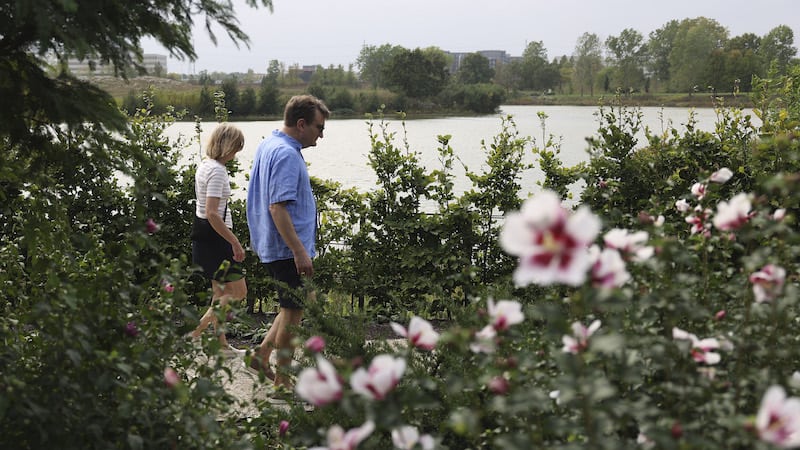
The dull visual of a long road is interrupted by a gravel footpath that winds back and forth across the pavement, tiny rocks turning to bricks when the path crosses the asphalt. But the eye is drawn to something else: not the trail, but the greenery growing on its fringes. Located far away from other attractions at the Chicago Botanic Garden, these plants are being grown in the newest and largest of three gardens. Scientists are evaluating them over the course of several years to determine which ones are best suited to thrive in the Upper Midwest.
“We grow them for three years, four years, five years. Every day during the growing season, we collect data,” said Fred Spicer, executive vice president and director at the Botanic Garden. “How big is it? How wide is it? When did it start flowering? When did it stop? Did it live over winter? All those really good things.”
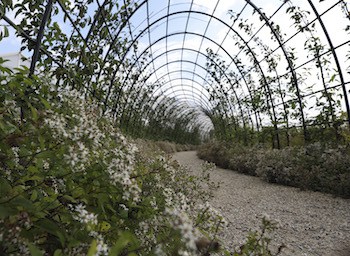
For his first public commission in the United States, Belgian landscape architect Peter Wirtz was asked to create a garden with plenty of evaluation space as well as an ornamental framework that would encourage visitors to go to an area that used to attract little foot traffic.
At the north entrance to the Mitsuzo and Kyoko Shida Evaluation Garden, two pergolas enveloped in climbing and twining clematis vines welcome visitors. They act like the guardians of a temple, according to Wirtz. And despite the design limitations of an asphalt road, the preexisting nursery and greenhouses and a neighboring lake, Wirtz brought this temple to life with a fusion of movement, color and textures.
Mounds of ornamental grasses in the evaluation garden look like slumbering cats, their blades “wonderfully undulating in the breeze,” Spicer said. “Walk by or drive by and feel the tails brushing your arm.”
European beech hedges that will grow up to 7 feet tall and steel tunnels covered in young crab apples zigzag through the garden, enticing visitors to get lost among trees and shrubs, to take the paths less traveled. The third and largest tunnel curls around itself like a snail, Spicer noted.
“Imagine like a candy coating of green,” he pointed at the growing crab apples, “and of course when they flower, the white petals fluttering down will be like you’re in a little snowstorm to distract you from the road, to take you to a different place.”
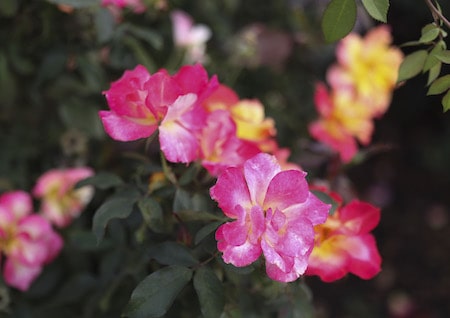
And there’s a chance to stop and smell the roses, too. The Shida Evaluation Garden also houses shrub roses in collaboration with the American Rose Sustainability Trials program to identify the most resilient and beautiful of their cultivated varieties. Though roses being bred for resistance or size often lose their smell, some of the red, yellow and pink flowers dotting the shrubs still managed to fill the air with a subtle, sweet aroma.
“Rose breeders will send their plants that they think are worth something to different rose evaluators throughout the country,” Spicer said. “We’ve been doing this work for decades. So we collect our data over a period of years, and send that data back to the growers. There’s no money exchanged, we get the plants for free. We’re also providing our information for free.”
Much like the roses, the other plants in the evaluation gardens are studied and rated on different sets of criteria. One focuses on ornamental qualities such as flowers and foliage, another on cultural adaptability to environmental and soil conditions. Another set of characteristics the Botanic Garden evaluates focuses on winter survivability, and disease and pest resistance.
When he walks down by the evaluation garden, Richard Hawke notices visitors approaching different plants, some of which are evidently more popular than others. As one of the administrators of the plant evaluation program at the Botanic Garden, he’s always intrigued by the public’s interests.
Inspirational gardens in Virginia
“And sometimes you find out they’re looking at a bug,” he said. Spicer erupted in laughter.
“Everybody’s looking for a different reason,” said Hawke, who is also the director of ornamental plant research. “But that’s the beauty of a garden like this, either the garden as a whole or an evaluation garden, it can be many things to many people.”
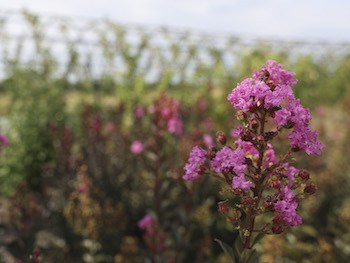
Study results from these trials allow the Botanic Garden to recommend plants — from over 1,000 taxonomic groups currently being evaluated — to gardeners interested in growing them at home, as well as industry professionals.
Findings are published on the Botanic Garden’s website, as well as in the magazine Fine Gardening and in other horticultural and green industry publications.
One of the reasons why this new evaluation garden might be of particular interest to the general public is that it allows the Botanic Garden to study plants in an area with shade, which naturally occurs in home gardens.
“The other thing that this garden does that our sun-deck garden doesn’t do is that this gives you the competition that you see in a home garden,” Hawke said. “The trees, the shrub roots, the hedges, all that stuff’s here.”
Evaluation studies are not new, but the Botanic Garden claims to run the largest and most diverse program in the nation, as well as one of the few that formally evaluates perennials or plants that live more than two years. And plant evaluation has become all the more important as the climate changes and extreme weather events like heat waves and heavy rains become more common and intense.
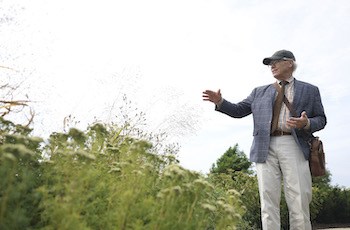
“We’re seeing, I think, the effects of a variable climate in that warms are getting warmer, and we expect some cold snaps to be unusually cold,” Spicer said.
Studying plants over many years — four years for perennials and up to 10 years for some trees — will give scientists a more nuanced understanding of their ability to survive these long-term changes on their own. In their quest to be “hands off,” Hawke said, the Botanic Garden rarely irrigates, prunes and stakes trial plants in the evaluation gardens. They don’t do pest control either.
And as careful as they are to intervene very little in the growth of their cultivated plants, they are also careful in managing the natural landscapes of the Botanic Garden.
“This is the other thing that I love about this garden — this beauty,” Hawke said, gesturing to the lake and the prairie on the other side. “I mean, this is not part of the trials, but when you’re out here, this is such a great place to stand, a great place to be. It just feels so natural.”
Part of the lake’s historically eroded shoreline has been recently restored with native wetland plants, grown from seeds collected within a 50-mile radius. Native plants and their roots prevent erosion, protect against flooding and improve water quality — and look more beautiful than traditionally used turf grass.
“So (we’re) creating really important habitat for wildlife, creating this diversity for pollinators that is missing in a lot of our modern landscapes,” Spicer said. “And it illustrates the thing that the Chicago Botanic Garden does probably as good as, or better than, anyone in the country, which is this concept of nature and nurture right next to each other. A cultivated landscape next to a managed natural landscape. It’s just really filled with beauty.”
©2023 Chicago Tribune. Visit chicagotribune.com. Distributed by Tribune Content Agency, LLC.


